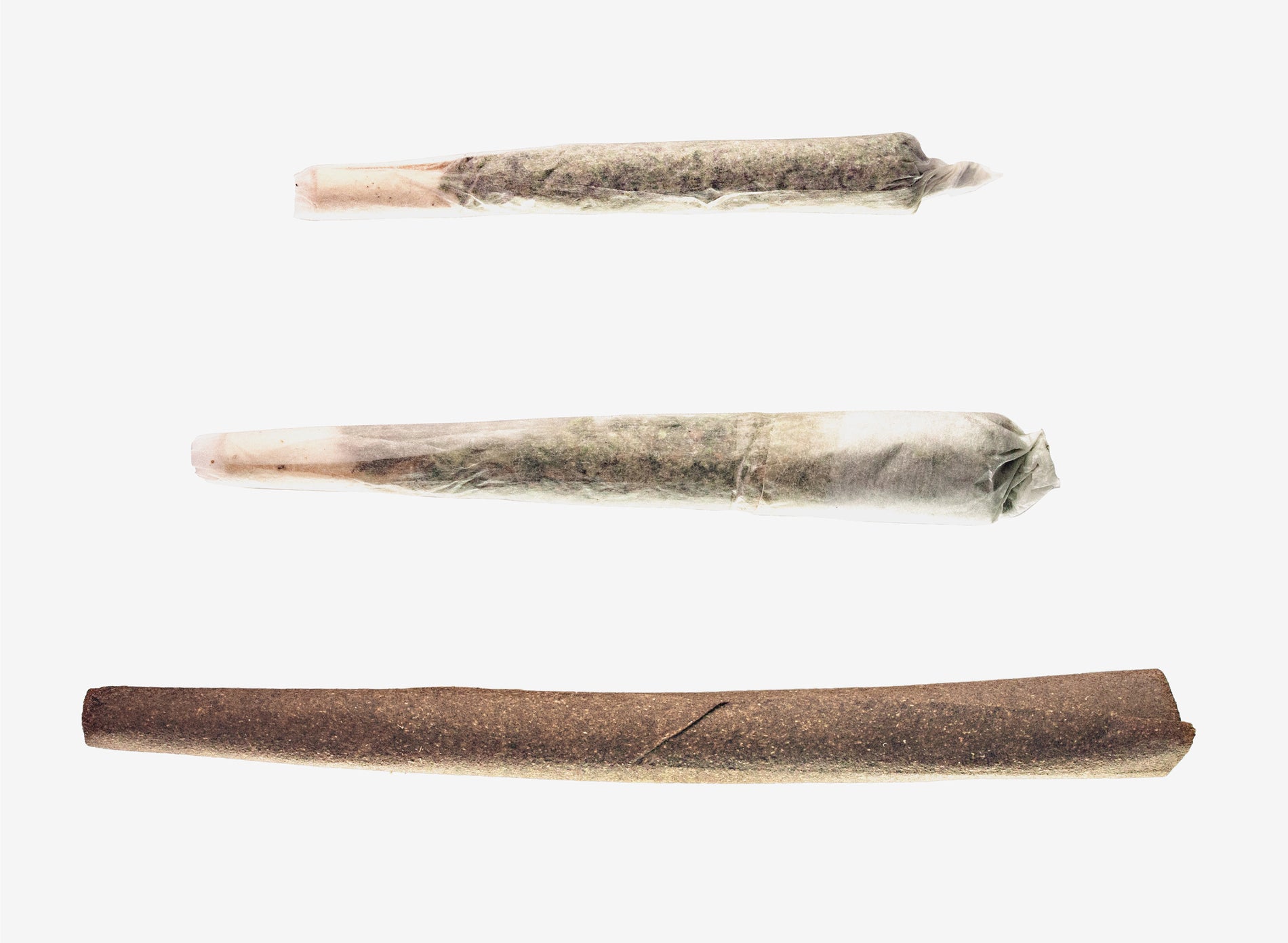Here’s a comprehensive breakdown of the key differences between spliffs, blunts, and joints
There’s no simpler way to end the day than with a good smoke. The convenience of pipes and bongs make them trusted tools for your day-to-day smoking habits, but there’s no better feeling of gratification than twisting one up the old fashion way.
Since the beginning, people have been rolling up joints to get high. It remains one of the most popular forms of consuming cannabis today, even as the market expands with high-potency extracts, tasty edibles, and stealthy vape pens. The craze surrounding pre-rolled joints make them one of the most popular products flying off of shelves due to their convenience. The novices who have trouble figuring out how to roll a joint can benefit from pre-rolled cone joints that need filling.
There’s often confusion in stoner vocabulary when it comes to the definition of a joint vs. blunt vs. spliff. Despite popular belief, these terms aren’t interchangeable. There are similarities among each, some in more ways than others, but there are more differences that distinguish them apart. So, if you’re among those who refer to a blunt as a joint, or can’t tell the difference between a spliff vs. blunt, then we’re here to break down the differences between each.
Joint vs. Blunt
The joint is among the most iconic symbols in pop culture today and quickly became the most common way to smoke weed. The most famous stoners on the planet are typically inhaling on a doobie. A blunt is the only cannabis product that might edge a joint in popularity. If you’re wondering about the difference, think of it similarly to a cigarette vs. a cigar. Tobacco is rolled up in paper with a filter and forms what we now know as a cigarette, while a cigar is a leaf wrapped around dried and fermented tobacco leaves. Similarly, a joint uses joint papers while cigar wraps make blunts.
Difference Between A Blunt And A Joint
With about anything in life, it’s about personal preference. The differences between a blunt and a joint are significant, as one contains tobacco while the other does not. However, the critical factor that differentiates the two is the material. A good joint depends on using the best rolling papers, like Zig Zags or RAW. Blunts, on the other hand, require a cigar or a cigarillo. They are then gutted and packed with cannabis before being lit. The only problem is that you’re inhaling tobacco, which can increase the chance of disease.
So, What Are Spliff Vs. Joints?
Spliffs are often mistaken for joints, but that isn’t necessarily accurate. In a sense, spliffs are a middle ground between joints and blunts. It contains tobacco, so it’s not really a joint. However, the tobacco isn’t necessarily overbearing, like a blunt. A spliff is a joint that includes a mix of marijuana and tobacco before it’s rolled into a blunt. These days, it’s not just tobacco from cigarettes but products like Grabba that have been sweeping the nation. Some people enjoy mixing tobacco because it cuts the harshness of the cannabis smoke, creating a smoother smoke. Others want the buzz of tobacco that comes along with them. There are no set rules on the cannabis to tobacco ratio, but in certain European countries, it’s common to find a 50/50 blend.
Wrappers
Different rolling paper materials are required between joints, spliffs, and blunts. Blunts, for instance, are created with cheap, accessible cigars like Backwoods, Swisher Sweets, or Phillies, that can be deconstructed and filled with marijuana. However, the significant rise of blunt wraps is due to eliminating the process of emptying the guts of a cigar. That way, smokers’ won’t have their time consumed by going through the whole process of breaking down a cigar.
Examples of Blunts:
Backwoods – Natural tobacco leaf
Cigars/Cigarillos – Phillies, Swisher Sweets, White Owl, etc.
Hemp Blunts – Alternatives to avoid consuming tobacco and nicotine products.
Though there’s nothing wrong with natural cigars, those with a sweet tooth can find flavored blunt wraps just as quickly.
Papers
Rolling papers are certainly more versatile than blunts. They’re far more durable because blunts are delicate to roll with. However, they also come in various sizes and materials to suit your needs. Much like blunts, flavored rolling papers are also on the rise in the market.
Rolling papers boil down to personal preference and how much you smoke, but it also boils down to whether you’re rolling a joint or a spliff. Since joints contain no tobacco, rolling pinners without anything mixed in within a single-size pape is more accessible. If you’re rolling with tobacco, at the very least, it’s best to use a 1 ¼ size pape.
Sizes of Rolling Papers:
- Single
- 1 ¼ inch
- 1 ½ inch
- Double wide
- King Size
These papers are also available as cones, which make the rolling process easier for beginners. Instead of going through the process of pencil rolling, brands like RAW and Zig Zags have pre-made cones available with a filter that need to be packed with cannabis. Between blunt wraps and pre-rolled cones, there’s never been an easier time to smoke out.



















